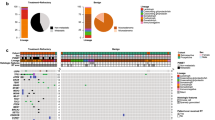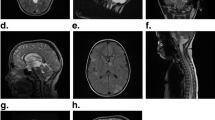Abstract
The current World Health Organization classification of diffuse astrocytic and oligodendroglial tumors requires the examination of isocitrate dehydrogenase 1 (IDH1) or IDH2 mutations. Conventional analysis tools, including Sanger DNA sequencing or pyrosequencing, fail in detecting these variants of low frequency owing to their limited sensitivity. Digital polymerase chain reaction (dPCR) is a recently developed, highly sensitive, and precise quantitative rare variant assay. This study aimed to establish a robust limit of quantitation of the dPCR assay to detect a small fraction of IDH1 R132H mutation. The dPCR assays with serially diluted IDH1 R132H constructs detected 0.05% or more of mutant IDH1 R132H in samples containing mutant DNA. The measured target/total value of the experiments was proportional to the dilution factors and was almost equal to the actual frequencies of the mutant alleles. Based on the average target/total values, together with a twofold standard deviation of the normal DNA, a limit of quantitation of 0.25% was set to secure a safe margin to judge the mutation status of the IDH1 R132H dPCR assay. In clinical settings, detecting IDH1 R132H using dPCR assays can validate ambiguous immunohistochemistry results even when conventional DNA sequencing cannot detect the mutation and assure diagnostic quality.



Similar content being viewed by others
References
Brat DJ, Ellison DW, Figarella-Branger D et al (2021) WHO Classification of tumors Series, International Agency for Research on Cancer, Lyon, vol 6, 5th edn., https://tumourclassification.iarc.who.int/chapters/45. Accessed 8 Jan 2021.
Xia L, Wu B, Fu Z et al (2015) Prognostic role of IDH mutations in gliomas: a meta-analysis of observational studies. Oncotarget 6:17354–17365. https://doi.org/10.18632/oncotarget.4008
Weller M, van den Bent M, Tonn JC et al (2017) European Association for Neuro-Oncology (EANO) guideline on the diagnosis and treatment of adult astrocytic and oligodendroglial gliomas. Lancet Oncol Elsevier 18:e315–e329. https://doi.org/10.1016/S1470-2045(17)30194-8
Arita H, Narita Y, Matsushita Y et al (2015) Development of a robust and sensitive pyrosequencing assay for the detection of IDH1/2 mutations in gliomas. Brain Tumor Pathol 32:22–30. https://doi.org/10.1007/s10014-014-0186-0
Cheng J, Haas M (1992) Sensitivity of detection of heterozygous point mutations in p53 cDNAs by direct PCR sequencing. PCR Methods Appl 1:199–201. https://doi.org/10.1101/gr.1.3.199
Monzon FA, Ogino S, Hammond MEH et al (2009) The role of KRAS mutation testing in the management of patients with metastatic colorectal cancer. Arch Pathol Lab Med 133:1600–1606. https://doi.org/10.5858/133.10.1600
Ihle MA, Fassunke J, König K et al (2014) Comparison of high resolution melting analysis, pyrosequencing, next generation sequencing and immunohistochemistry to conventional Sanger sequencing for the detection of p.V600E and non-p.V600E BRAF mutations. BMC Cancer 14:13. https://doi.org/10.1186/1471-2407-14-13
Preusser M, Wöhrer A, Stary S et al (2011) Value and limitations of immunohistochemistry and gene sequencing for detection of the IDH1-R132H mutation in diffuse glioma biopsy specimens. J Neuropathol Exp Neurol 70:715–723. https://doi.org/10.1097/NEN.0b013e31822713f0
Balss J, Meyer J, Mueller W et al (2008) Analysis of the IDH1 codon 132 mutation in brain tumors. Acta Neuropathol 116:597–602. https://doi.org/10.1007/s00401-008-0455-2
Watanabe T, Nobusawa S, Kleihues P, Ohgaki H (2009) IDH1 mutations are early events in the development of astrocytomas and oligodendrogliomas. Am J Pathol 174:1149–1153. https://doi.org/10.2353/ajpath.2009.080958
Yan H, Parsons DW, Jin G et al (2009) IDH1 and IDH2 mutations in gliomas. N Engl J Med 360:765–773. https://doi.org/10.1056/NEJMoa0808710
Ichimura K, Pearson DM, Kocialkowski S et al (2009) IDH1 mutations are present in the majority of common adult gliomas but rare in primary glioblastomas. Neuro Oncol 11:341–347. https://doi.org/10.1215/15228517-2009-025
Preusser M, Capper D, Hartmann C, Euro-CNS Research Committee (2011) IDH testing in diagnostic neuropathology: review and practical guideline article invited by the Euro-CNS research committee. Clin Neuropathol 30:217–230. https://doi.org/10.5414/np300422
Zou Y, Bai HX, Wang Z, Yang L (2015) Comparison of immunohistochemistry and DNA sequencing for the detection of IDH1 mutations in gliomas. Neuro Oncol 17:477–478. https://doi.org/10.1093/neuonc/nou351
Capper D, Weissert S, Balss J et al (2010) Characterization of r132h mutation-specific idh1 antibody binding in brain tumors. Brain Pathol 20:245–254. https://doi.org/10.1111/j.1750-3639.2009.00352.x
Jabbar KJ, Luthra R, Patel KP et al (2015) Comparison of next-generation sequencing mutation profiling with BRAF and IDH1 mutation-specific immunohistochemistry. Am J Surg Pathol 39:454–461. https://doi.org/10.1097/PAS.0000000000000325
Luchman HA, Chesnelong C, Cairncross JG, et al. (2013) Spontaneous loss of heterozygosity leading to homozygous R132H in a patient-derived IDH1 mutant cell line. Neuro Oncol 15:979–980. https://doi.org/10.1093/neuonc/not064
Louis D, Ohgaki H, Wiestler O et al (2016) World Health Organization classification of tumours of the central nervous system, revised, 4th edn. IARC Press, Lyon, France
Armbruster DA, Pry T (2008) Limit of blank, limit of detection and limit of quantitation. Clin Biochem Rev 29:S49-52
Hirano M, Ohka F, Maeda S et al (2018) A novel high-sensitivity assay to detect a small fraction of mutant IDH1 using droplet digital PCR. Brain Tumor Pathol 35:97–105. https://doi.org/10.1007/s10014-018-0310-7
Dong L, Wang S, Fu B, Wang J (2018) Evaluation of droplet digital PCR and next generation sequencing for characterizing DNA reference material for KRAS mutation detection. Sci Rep 8:9650. https://doi.org/10.1038/s41598-018-27368-3
Fujioka Y, Hata N, Akagi Y et al (2021) Molecular diagnosis of diffuse glioma using a chip-based digital PCR system to analyze IDH, tert, and H3 mutations in the cerebrospinal fluid. J Neurooncol 152:47–54. https://doi.org/10.1007/s11060-020-03682-7
Yamagishi Y, Sasaki N, Nakano Y et al (2021) Liquid biopsy of cerebrospinal fluid for MYD88 L265P mutation is useful for diagnosis of central nervous system lymphoma. Cancer Sci 112:4702–4710. https://doi.org/10.1111/cas.15133
Acknowledgements
The authors thank Sachiko Miura, Chizu Kina, and Toshiko Sakaguchi for their technical assistance. The Department of Brain Disease Translational Research is an endowment department supported by an unrestricted grant from Idorsia Pharmaceuticals Japan Ltd. This work was supported in part by Grant-in-Aid for Young Scientists (B) and for Scientific Research (C) (KAKENHI) from the Japan Society for the Promotion of Science (17K15659 and 22K06951, K. Satomi).
Funding
Japan Society for the Promotion of Science, 22K06951, Kaishi Satomi, 17K15659, Kaishi Satomi
Author information
Authors and Affiliations
Corresponding author
Ethics declarations
Conflict of interest
The authors declare no competing interests.
Additional information
Publisher's Note
Springer Nature remains neutral with regard to jurisdictional claims in published maps and institutional affiliations.
Supplementary Information
Below is the link to the electronic supplementary material.
Rights and permissions
About this article
Cite this article
Satomi, K., Yoshida, A., Matsushita, Y. et al. Clinical application of a highly sensitive digital PCR assay to detect a small fraction of IDH1 R132H-mutant alleles in diffuse gliomas. Brain Tumor Pathol 39, 210–217 (2022). https://doi.org/10.1007/s10014-022-00442-5
Received:
Accepted:
Published:
Issue Date:
DOI: https://doi.org/10.1007/s10014-022-00442-5




